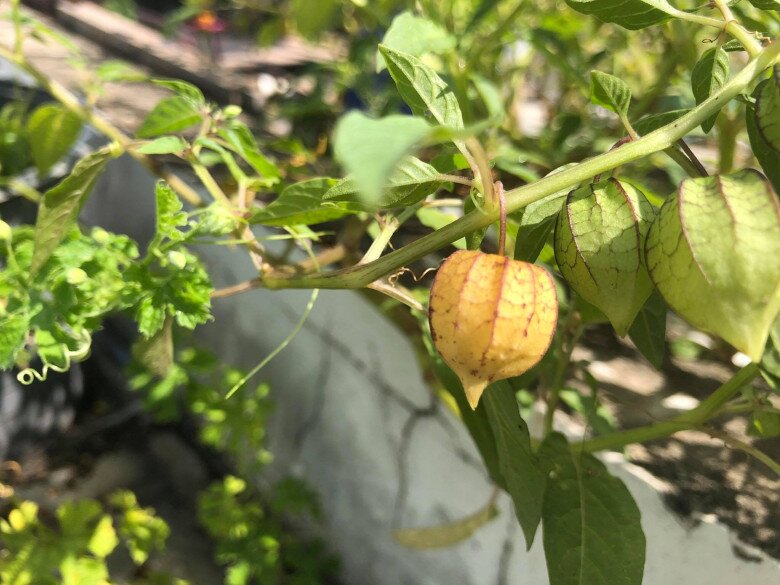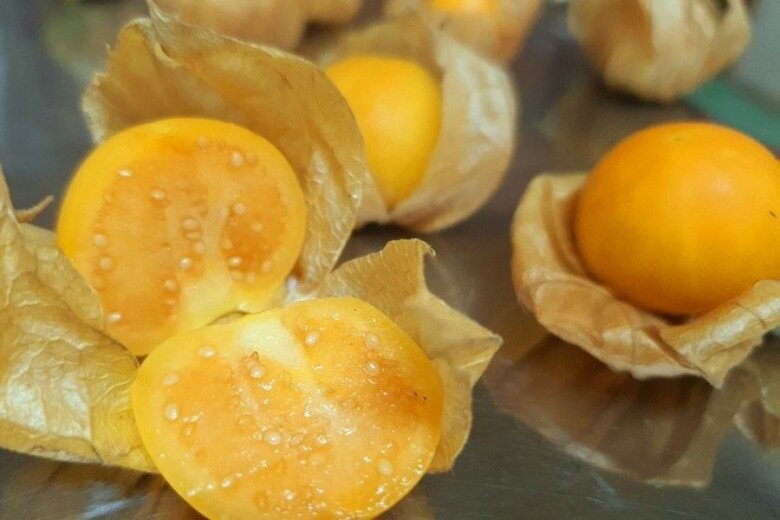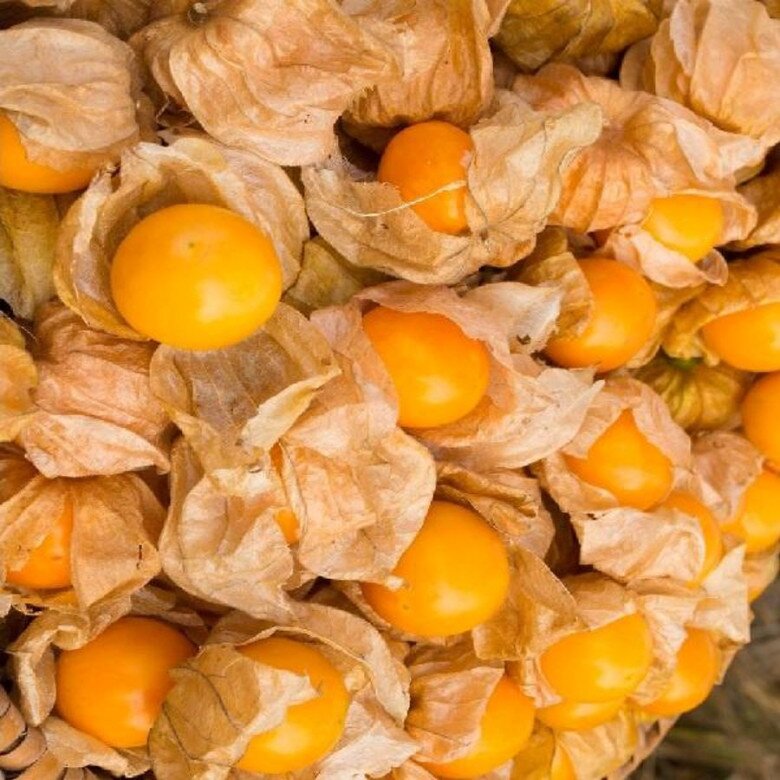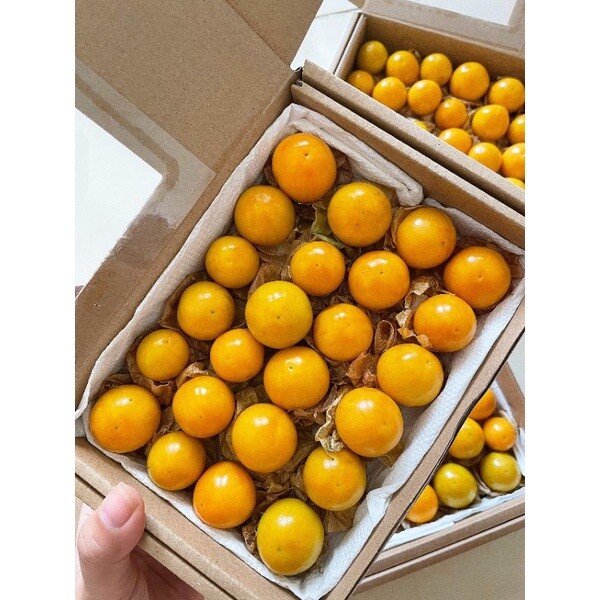
The golden berry, or Physalis, is undoubtedly a nostalgic fruit for many, evoking childhood memories.
In Vietnam, golden berries are intertwined with childhood recollections: summer afternoons spent running along rice fields, plucking ripe, golden fruits for a tangy-sweet snack. This humble fruit, with its slight tartness and refreshing flavor, captures the essence of carefree youth. In contrast, in South America—the homeland of Physalis peruviana—this fruit is cultivated with precision, organically grown, and selectively bred. The result? Plump, vibrant orange berries with a sweet, fruity aroma reminiscent of strawberries, apples, and grapes. This premium fruit is exported as a delicacy to Europe, Japan, and the United States.

South American golden berries are larger, juicier, and more vibrant.
Nutritional Value: More Than Just a Tangy Treat
Nutritional studies highlight the golden berry’s impressive profile:
Vitamin A: Richer than cherries or blueberries, promoting eye and skin health.
Vitamin C: Boosts immunity and acts as a powerful antioxidant.
Vitamin B3 (Niacin): Supports energy metabolism and nervous system function.
Minerals (iron, calcium, phosphorus): Strengthens bones, joints, and supports pregnant women.
Antioxidants: Protects the liver, kidneys, and combats aging.
In traditional Vietnamese medicine, wild golden berries (Physalis angulata) are valued for their cooling properties, treating sore throats, coughs, and skin infections. Both ancient wisdom and modern science recognize this tiny fruit’s health benefits.

While rural communities enjoy golden berries fresh or in soups, high-end restaurants transform South American varieties into culinary masterpieces: Fresh snacks: A low-calorie, healthy treat. Dessert garnish: The fruit’s lantern-like husk adds artistic flair to wedding cakes, mousses, and tarts. Salads and yogurt: Halved berries paired with greens, cheese, olives, or Greek yogurt. Jams and smoothies: Crafted into preserves or blended with mangoes and bananas. Detox drinks: Mixed with citrus and mint for a vitamin-rich, visually stunning beverage.
In South America, golden berry wine—a light, fruity vintage—is a cherished tradition.
Commercial Value: From Wild to Luxury
In Vietnam: Wild golden berries grow abundantly in fields, rarely sold in markets. When available, a bunch of young leaves costs mere pennies.
Abroad: In Japan, 100g of South American golden berries costs 338 yen (~$2.50), or ~$25/kg. In Europe, prices range from $8–12/kg, and imported berries in Vietnam can reach $18–20/kg.
Beyond supermarkets, chefs seek golden berries for their aesthetic appeal. Each golden fruit, encased in a delicate husk, elevates gourmet dishes, making them a staple at upscale events.

The golden berry’s journey inspires: with selective breeding, organic farming, creative processing, and strategic marketing, even wild plants can become luxury products.
If purslane graces five-star menus and pennywort transforms into detox drinks, why can’t Vietnam’s golden berries become a premium specialty? The key lies in recognizing and investing in this “treasure by the roadside.”






























